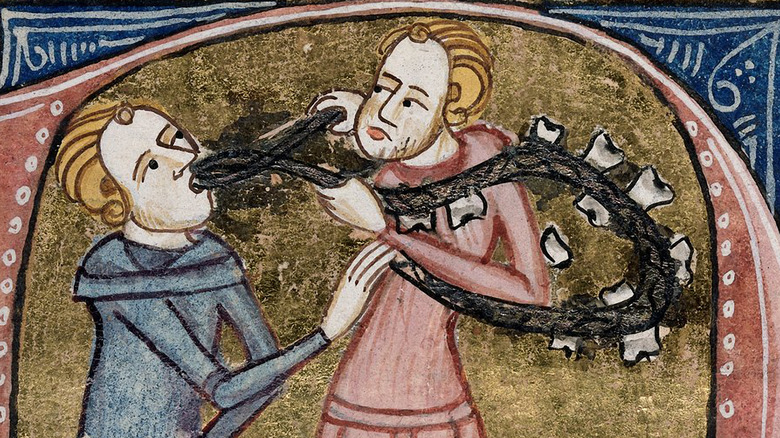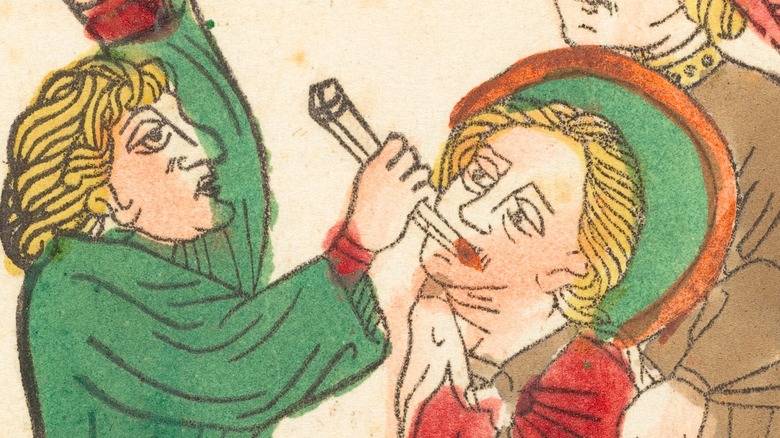The Surprising Way Teeth Were Once Used As Medicine
Medicine's come a long way. Our knowledge of the human body and how to treat it is always growing, and now we have access to thousands of surgeries and procedures that would have been the stuff of doctor's dreams just centuries ago. One of the biggest, strangest concepts we've strayed away from that used to dominate all disciplines of medicine was the notion that the dead could heal the living, which led to some pretty grisly and strange medical techniques.
According to NCBI, doctors and priests around the 14th and 15th centuries believed that pretty much any body part could be healed by its counterpart from a corpse. Fingers of executed criminals were reported to bring good luck and health, while the blood-soaked wig made from a hanged man's hair was said to grant invisibility. Raids to steal the hanging corpses of executed criminals were common, not just for the aforementioned superpowers they provided, but for their teeth, which could supposedly cure toothaches of the living.
Corpse teeth were supposedly curative
The medieval medical fascination with dead bodies spread deep into dentistry. According to Mental Floss, people from England would wear bags of teeth taken from corpses around their necks to prevent toothaches. Others would simply rub the corpse tooth against their own, applying directly to the afflicted area like the most morbid form of roll-on pain relief. This all stemmed from the general consensus that "like cures like," where the best way to heal a body part was to use the exact same body part. Since most people weren't too keen to give away their teeth, it left the sets of pearly whites lying 6 feet under as the next best option.
Sometimes other corpse parts were introduced to help heal teeth. In Ireland, it was believed that rubbing the gums above a hurting tooth with the finger from a cadaver would ease the pain; if that didn't work, then washing it with water was said to help. If that sounds like the first reasonable medical treatment, don't worry, the water also had to have washed a dead body. It's a wonder how far the world of medicine and dentistry has come.

